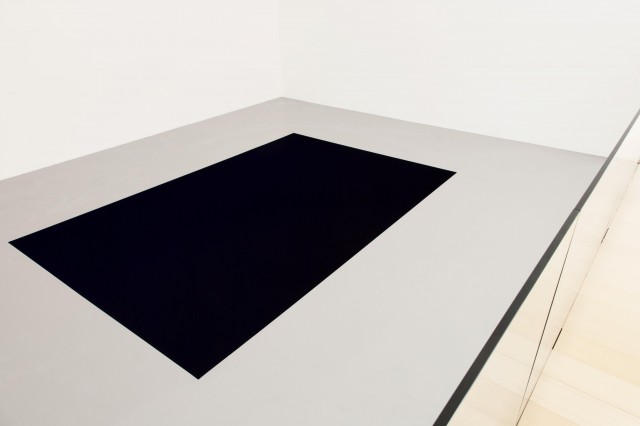Wax, drawing, craftsmanship, compositional intelligence, chaos and necessity, slowness and reflection: these are the features that distinguish Domenico Bianchi’s art.
Working on large surfaces, with patience and intensity, over lengthy periods, the artist experiments with an unusual technique of painting on wax – retrieved from the encaustic painting of the Roman period and used in the second half of the fifties by Jasper Johns in his Flag and Target series – to create paintings resembling Renaissance intarsia. Bianchi does not use traditional instruments, favoring less conventional techniques. He handles wax on canvas or paper as if it were a pigment. By embedding one or more works in modular structures, he develops his reflection on painting with an architectural function that has become another characteristic feature of his work. Deliberation, reflection on the reasons underlying his work, pigments (principally yellow and red and their combinations), the signs mentioned above that allude to biomorphic imagery, together with an obsessive meticulousness with attaining a smooth finish, give his painting a rarified image, where even the emotions seem to be controlled. All his works are untitled, as if to emphasize that even a name can disrupt the silences, pauses and reflections of an output that has become increasingly highly structured.
Geometry and a reductive exercise become, in Bianchi’s aesthetic, the basic phases and instruments by which he works on his conception of art as an act of reasoning, always hovering between idea and physicality, image and time. His painting is reduced to a few elements, almost to the essence, constantly seeking simplicity and reduction. The elegance of design that characterizes most of his works and which also appears in the site-specific work he conceived for the Madre in 2005, a design inserted in space, becomes the undisputed subject of his works, thus creating the core that generates form, movement and light. His encounter in the second half of the 1990s with a number of exponents of Arte Povera, in particular Jannis Kounellis and Mario and Marisa Merz, led Bianchi to conduct further research into the expressive force of raw materials, extending his use of materials from wax to sheets of platinum, palladium and silver. The transparency of light became the primary element of the artist’s poetic, together with a refined spatial dimension in wax carved, incised or scored with absolutely minimalist lines.
Bianchi pursues the harmony of the elements through the identification of a spatial dimension surfacing naturally from the combinations of lines, forms and volumes that emerge from the materials, the true expressive origin of the artist’s work, from their manipulation, from the exaltation of their intrinsic characteristics and from combinations executed with a refined and rarefied research. The two monumental marble benches, originally conceived for the seventeenth-century cloister of the Church of Donna Regina Vecchia to harmonize with its sumptuous Baroque lines, have now been reinstalled in the eighteenth-century atrium of the Madre, enhancing its quintessential neoclassical lines and at the same time suggesting a new definition of space, an invitation to linger and reflect. Beyond the immediate references to the tradition of art history, these two works are emblematic of the artist’s modus operandi, as they raise issues related to the spatial and structural vocation of the work and its relation to its surroundings, inhabiting it in evocative and sensitive ways.
EV




